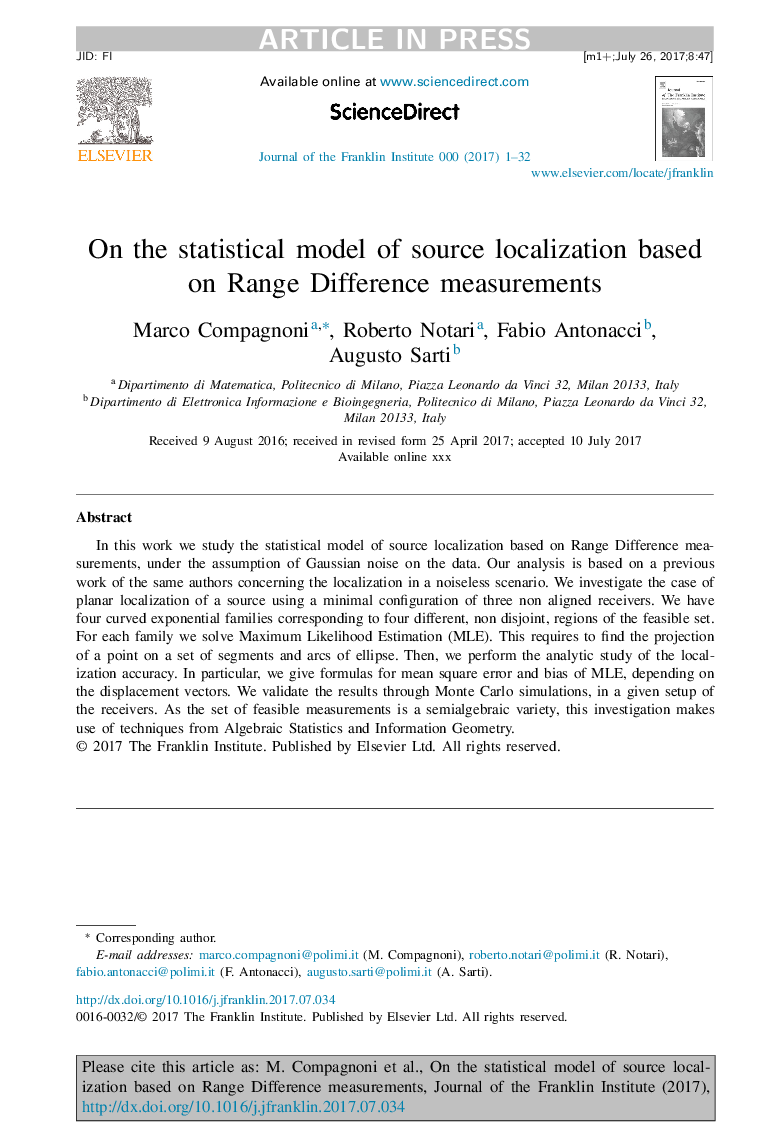| Article ID | Journal | Published Year | Pages | File Type |
|---|---|---|---|---|
| 6953297 | Journal of the Franklin Institute | 2017 | 32 Pages |
Abstract
In this work we study the statistical model of source localization based on Range Difference measurements, under the assumption of Gaussian noise on the data. Our analysis is based on a previous work of the same authors concerning the localization in a noiseless scenario. We investigate the case of planar localization of a source using a minimal configuration of three non aligned receivers. We have four curved exponential families corresponding to four different, non disjoint, regions of the feasible set. For each family we solve Maximum Likelihood Estimation (MLE). This requires to find the projection of a point on a set of segments and arcs of ellipse. Then, we perform the analytic study of the localization accuracy. In particular, we give formulas for mean square error and bias of MLE, depending on the displacement vectors. We validate the results through Monte Carlo simulations, in a given setup of the receivers. As the set of feasible measurements is a semialgebraic variety, this investigation makes use of techniques from Algebraic Statistics and Information Geometry.
Related Topics
Physical Sciences and Engineering
Computer Science
Signal Processing
Authors
Marco Compagnoni, Roberto Notari, Fabio Antonacci, Augusto Sarti,
